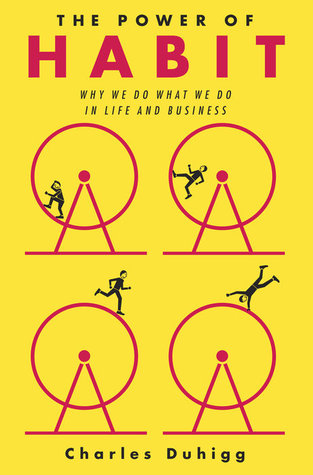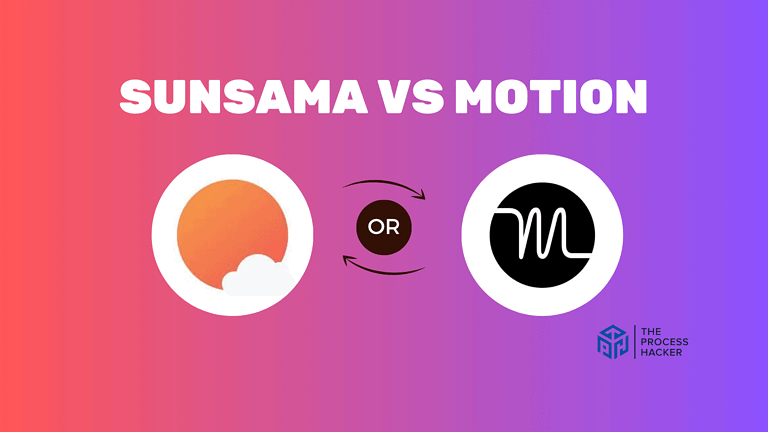The Power of Habit by Charles Duhigg | Book Summary
In his book, The Power of Habit: Why We Do What We Do in Life and Business, Charles Duhigg explains the science of habits and how to change them. “Habits can be changed if we understand how they work.”
Recently in neuroscience and psychology, our understanding of habits has gotten better than it ever has. When understanding the science, you can affect significant changes in your life, business, and community.

In the Power of Habit, Charles Duhigg defines habits as follows:
Habits – “the choices that all of us deliberately make at some point, and then stop thinking about but continue doing, often every day.”
There are recognizable patterns in individuals, organizations, and societies as a whole. Science shows us how habits form and how they change to transform our habits to live more efficient, healthier lives. For further reading on habits, check out our summary of Atomic Habits by James Clear.
Download the PDF Book Summary for The Power of Habit by Charles Duhigg
Part I – The Power of Habit in Individuals
In the first part of the Power of Habit, Charles Duhigg discusses habits within our personal lives. It examines the science of habit formation, establishing new habits, and breaking old ones.
Chapter 1 – The Habit Loop: How Habits Work
Scientists found that an old, central part of the brain, the basal ganglia, was responsible for storing and acting on habits. The basis of how habits emerge is chunking:
Chunking – the process of the brain converting a sequence of action into an automatic routine
Habits form as our brain is always looking for ways to make life easier. If our brain is left unchecked, it will transform any routine into a habit, saving us effort, and requiring less room to store. However, too much conservation leads to vulnerability, and we could miss something important.
MIT researchers found that our brains develop habits through the habit loop, which is a three-step process:
- Cue – “a trigger that tells your brain to go into automatic mode and which habit to use”
- Routine – a sequence of actions to fulfill the habit, “which can be physical or mental or emotional”
- Reward – the satisfying goal occurring after performing the habit that “helps your brain figure out if this particular loop is worth remembering for the future”
Over time, the habit loop becomes more automatic as they emerge to keep your brain operating amid the minutiae of life. However, your brain has trouble determining which practices are positive from those that are negative.
Therefore, we can exert tremendous self control over our habits if we understand how they work and tinker with the steps of the habit loop. Atomics Habits (book summary) by James Clear also discusses the atomic habits loop with an additional fourth step.
Examples from this Chapter
- An elderly man, Eugene Pauly, suffered from a condition that caused memory loss; however, he could mostly function due to his habits and create new ones over time.
- Fast-food chains make their food specifically to provide immediate rewards to the customer, such as McDonald’s fries that melt instantly in one’s mouth.
Chapter 2 – The Craving Brain: How to Create New Habits
In Chapter 2 of the Power of Habit, Charles Duhigg argues the power of habit exists within the neurological cravings:
Craving – the anticipation of the reward that activates the habit loop
When we associate cues with specific rewards, a craving will emerge subconsciously to induce the habit loop.
Many studies show that the cue and reward on their own are not powerful enough to solidify a habit. It becomes automatic when your brain has a craving or the expectation of the reward. Thus, we can build a new habit by assembling a cue, routine, and reward, and cultivating a craving that becomes a catalyst for the loop.
However, these cravings don’t have full control over our minds. There are mechanisms we can use to ignore the temptations. We need to find the craving that is inducing the habit to overpower it, and we can break a bad habit.
Examples from this Chapter
- Claude C, Hopkins, a “one ad man,” promoted Pepsodent toothpaste using tingy ingredients to cause cravings and transform brushing teeth into a household habit.
- Procter & Gamble made the Febreze spray successful by adding a fresh, clean scent that satisfies consumers’ habitual cravings.
- Shampoos have foaming agents to satisfy the cravings of customers of validating the effectiveness of the product.
Chapter 3 – The Golden Rule of Habit Change: Why Transformation Occurs
In Chapter 3 of the Power of Habit, Charles Duhigg says that it is really tough to break bad habits so you should replace them with determination using the Golden Rule:
Golden Rule of Habit Change:
- Use the same Cue.
- Provide the same Reward.
- Change the Routine.
Habit Reversal Therapy is a treatment used for behavioral problems using the Golden Rule:
- Awareness Training: Understand the cue or what is triggering the normal behavior, the cravings driving the habit, and the reward that is being craved.
- Competing Response: Replace the old routine with a new one while the cue and response stay the same.
In the Power of Habit novel, Charles Duhigg says that under challenging circumstances, replacing the routine may not be successful as we require belief:
Belief – the faith in something greater than one’s self, such as God, to provide the why necessary for one to make a permanent change
Our beliefs are necessary for transforming our replaced routine into a permanent behavior change. If you encounter stress while not having a strong belief, you may get derailed and revert to the old routine.
Thus, a community can help instill the belief that change is possible as shared group experiences are compelling. As you may struggle to make changes on your own, the community can help you believe in yourself and replace the habit to change your behavior permanently.
In 1994, Harvard researchers found that people made drastic life changes after a personal tragedy such as loss, divorce, or a life-threatening sickness. However, just as often, no tragedy precedes people’s transformations. Instead, the latter set of people were part of social groups that helped them believe and make changes.
Examples from this Chapter
- Coach Tony Dungy drilled automatic habits into his players to react to subtle on-field cues, which turned his teams into winning teams. Later, Dungy’s kid committed suicide, which caused his players to rally around him, and they won the Super Bowl.
- Alcoholics Anonymous instilled a belief in God to help its members to replace their drinking addiction in the face of stress and tragedy.
Download the PDF Book Summary for The Power of Habit by Charles Duhigg
Part II – The Power of Habit in Successful Organizations
In the second part of the Power of Habit, Charles Duhigg explores the habits of successful entrepreneurs, businesses, and organizations.
Chapter 4 – Keystone Habits: Which Habits Matter Most
In Chapter 4 of the Power of Habit, Charles Duhigg claimed that keystone habits are powerful habits that matter most:
Keystone Habit Definition – “the small changes or habits that people introduce into their routines that unintentionally carry over into other aspects of their lives”
These fundamental habits cause chain reactions within your life or organization. You can use the 80/20 rule to identify the few key priorities and keystone habits: “The habits that matter most are the ones that, when they start to shift, dislodge, and remake other patterns.” Keystone habits are very effective at creating “small wins:”
Small Win – a tangible, finished, and implemented reward of moderate significance
Through small wins, keystone habits can create widespread changes in an organization. These wins can stack together to set forces in motion causing successive win after win to be so good they can’t ignore you. The resulting reward is a keystone habit that has an outsized impact.
Whether leaders are aware of them or not, keystone habits clarify core values and shape corporate culture. When you understand your keystone habits, decision-making becomes much easier when done in alignment with your core values. For example, you can hire and fire employees by observing if they fit your core values and culture.
Examples from this Chapter
- Executive Paul O’Neill focused on the keystone habit of worker safety to transform Alcoa from a failing aluminum manufacturer into a top performer.
- Michael Phelps focused on a few core routines, including viewing his “videotape” to visualize every part of his race, which led him to become an Olympic champion.
Chapter 5 – The Habit of Success: When Willpower Becomes Automatic
In Chapter 5 of the Power of Habit, Charles Duhigg states the most crucial keystone habit for individual success is willpower:
Willpower – the control exerted to do something or restrain impulses
In the 1960s, Stanford conducted the Marshmellow study to find that children who delayed gratification were more successful as adults academically and socially. Recently, a University of Pennslyvania study found that self-discipline was a more significant predictor of academic performance than intellectual ability. Thus, making willpower a good habit is the best way to strengthen it.
Case Western researcher Mark Muraven found that willpower is like a muscle that “gets tired as it works harder, so there’s less power left over for other things.” Further research showed that when people strengthen willpower in a particular aspect of their life (fitness, finances, spirituality, etc.), they worked harder overall and form life-changing positive habits, which positively affected other parts of their lives.
Many companies have incorporated willpower lessons into their training by “turning self-disciple into an organizational habit.” For example, Grant Cardone challenges his people to use “The 10X Rule” to focus one’s willpower to take 10 times the action toward one thing. Later, Muraven’s research found that one’s sense of autonomy greatly affected willpower:
Autonomy – the sense of control one has over their experience
His study found that those who were treated well had a greater sense of autonomy. When you feel like you are in control of life, your willpower muscle depletes at a slower rate than when not in control. Giving employees more autonomy will improve the amount of energy and focus they put toward their work within organizations.
Examples from this Chapter
- Starbucks developed planned routines for its employees to deal with stressful situations automatically. One habit loop of note is the LATTE method: Listen to the customer, Acknowledge their complaint, Take Action by solving the problem, Thank them, and then Explain why the problem occurred.
- In 1992, a British psychologist helped low-income elderly people recover faster from their painful hip or knee replacement surgery by creating written action plans.
Chapter 6 – The Power of a Crisis: How Leaders Create Habits Through Accident and Design
In Chapter 6 of The Power of Habit, Charles Duhigg discusses that institutional habits exist everywhere. Some organizations have leaders who intentionally establish a strong culture and practices allowing them to thrive. However, many exhibit destructive habits, which result from thoughtless, reactive leaders who fail to establish an ethical culture. For the latter, crises can provide opportunities to replace their harmful habits with better ones.
In 1982, Nelson and Winter published A Evolutionary Theory of Economic Change, which became a renowned book in business strategy and organizational theory. They found that organization routines are critical:
Routines – the habits that “provide the hundreds of unwritten rules that companies need to operate”
These routines provide employees with procedures, permissions, and organizational brain trust to get work done for their organization. Above all, the routines create truces:
Truce – an agreement between “potentially warring groups or individuals within an organization”
The truces allow for healthy tensions to form between various employees and departments, allowing the company to get work done, grow, and make profits. Leaders have to establish a strong culture, clearly define habits, and assign roles. Most of the time, the routines and truces work well to create organizational justice, and the business thrives.
However, organizations with destructive habits with stubborn people can fall prey to crises:
Crisis – a time of intense difficulty, trouble, or danger that causes an organization and it’s habits to “become malleable enough to both assign responsibility and create a more equitable balance of power.”
Crises and perceived ones are valuable opportunities to make significant changes when appropriately used. The best leaders use crises to improve habits and realign responsibilities to have one priority, department, or person gain power over a truce for the organization’s greater good.
Examples from this Chapter
- A Rhode Island Hospital had arrogant surgeons that created a toxic culture with poor institutional habits. The new Chief Quality Officer made changes to realign truces to give nurses more responsibility, and the hospital significantly improved its safety.
- King’s Cross Station experience a preventable crisis in which no one took charge in a fire with 31 people dying. After investigating, the leadership was removed, new laws were enacted, and new safety procedures were established.
Chapter 7 – When Companies Predict (and Manipulate Habits)
“If you dress a new something in old habits, it’s easier for the public to accept it.” In Chapter 7 of The Power of Habit, Charles Duhigg describes how organizations predict consumer habits and use familiarity and stories to manipulate them into purchasing decisions.
In 1984, UCLA Professor Alan Andreasen wondered why people change their shopping habits. He found that consumers changed their buying habits when enduring a significant life change (jobs, relationships, homes, etc.) as they were more “vulnerable to intervention by marketers.”
In the past, retailers would treat shoppers the same with one-size-fits-all methods to trigger consumers’ buying habits based on psychology. Recently, major chains, especially Target, have established data analytics departments to determine more individualized consumer preferences, advertise accordingly, and provide targeted offers they can’t refuse.
Target assigned identification codes to each shopper to collect specific data regarding their purchasing history, store interactions, and demographics. Target determined when their customers were pregnant and knew that this niche was very profitable, but had to avoid being creepy. Thus, the retailer blended the targeted baby ads into unrelated ones to successfully trigger consumers into buying baby products.
Examples from this Chapter
- Initially unfamiliar to listeners, radio DJs made Outcast’s song, “Hey Ya,” famous by sandwiching it between two familiar hits. It went on to earn millions and win a Grammy.
- In WWII, the US Government realized the mainland might suffer from a meat shortage, so it popularized organ meats to be the replacement using a campaign targeting housewives.
- The YMCA lured people to workout in their facilities by promoting group exercise classes over gym equipment to appeal to their familiar human drives of friendship.
Download the PDF Book Summary for The Power of Habit by Charles Duhigg
Part III – The Power of Habit in Societies
In the final part of the Power of Habit, Charles Duhigg examines habits within societies.
Chapter 8 – How Movements Happen
Why do some movements blow up while others fail to take hold? The key is in the power of social habits:
Social Habits – the unconscious behaviors that sweep across a large group of people that harness the power to change the world
Researchers have found three major parts at the root of many social movements:
- Strong Ties: The movement begins within a friend group due to the social habits of strong ties that hold friendships and acquaintances together.
- Weak Ties: The movement grows beyond the friend group due to the social habits of the weak ties that hold the community together. More critical than strong links, they allow individuals to access people and resources outside their close friends. Also, weak ties create peer pressure to encourage individuals to conform to group expectations. With fewer weak ties, people lack information and are stuck in their clique bubble.
- Empowerment: The movement endures due to its leadership empowering its participants to instill identity-based habits and accept ownership. “For an idea to grow beyond a community, it must become self-propelling. And the surest way to achieve that is to give people new habits that help them figure out where to go on their own.” With all three aspects, the movement grows sustainably to achieve a critical mass.
On December 1, 1955, Rosa Parks refused to give up her bus seat to a white man and was arrested in Mongomery, Alabama. She was not the first person to be detained for defiance; however, this event kicked off the Civil Rights Movement, which is shown in the three parts:
- Strong Ties: The Montgomery Bus Boycott started as Parks was socially well-connected in the city. She had many friendships and affiliations within various groups (social, philanthropic, religious, etc.) that stemmed across racial and economic lines.
- Weak Ties: Park’s friends spread the word and created peer pressure to make the Montgomery Bus Boycott a community-wide action. Even though many did not know Parks personally, Blacks felt obligated to join in the movement.
- Empowerment: The movement grew into the larger Civil Rights Movement due to the social habits that led to peaceful protests across the country. Eventually, the campaign led to the Civil Rights Act of 1964.
Examples from this Chapter
- A young pastor, Rick Warren, used social habits to create a self-propelling Christian movement into the nation’s largest church in Saddleback Valley, California.
Chapter 9 – The Neurology of Free Will: Are We Responsible for Our Own Habits?
In Chapter 9 of The Power of Habit, Charles Duhigg discusses the moral question of to what extent we are responsible for our own habits. Two stories illustrate how habits affect individual lives.
Angie Bachmann was a bored housewife that gambled to deal with the boredom and stress. She became addicted and racked up a debt of $20,000 to the casino. Bachmann declared bankruptcy, and her lawyer argued that she did not gamble not by choice but due to habit. Three years later, Bachmann inherited a million dollars and fell back into the gambling habit, and the casino fed her addiction by offering her more rewards. One night, Bachmann lost $250,000, spiraling into gambling away the rest of her money and home.
Reza Habib, a neuroscientist, found that there are differences in brain activity between various gamblers. Social gamblers consider a “near miss” as a loss, which may prevent them from placing further bets. However, habitual gamblers neurologically observe that “near miss” to be a win, become excited, and continue to gamble.
One night, Brian Thomas subconsciously reacted to the noises of people outside his camper. He thought there was an attacker in his bed, but it was really his wife who he strangled to death. Thomas had experienced a sleep terror, which is similar to sleepwalking but more powerful. It shutdowns the brain except for the region that controls behavior, which causes the person to habitually react based on their primal instincts. Thomas was not aware of what was happening and acted upon automatic behaviors causing him to kill his own wife.
In the end, Thomas murdered an innocent person, while Bachmann was indebted to a casino. In both cases, lawyers argued the same defense: their clients acted out of habit and not by choice. Thomas was set free as the jury believed that he was not aware of his sleep terror habit and could not prevent the murder from occurring. However, Bachman was charged for her debt as she was aware of her gambling addiction.
There are many activities and habits in your life that you are conscious of. Thus, if you want to change a habit, you have the ability to do it. You have to believe that change is possible and consciously make the decision.
Appendix: Using The Power of Habit
There are many ways to change your habits as it depends on the person and their behaviors. Thus, in The Power of Habit, Charles Duhigg provides “a framework for understanding how habits work and a guide to experimenting with how they might change:”
- Identify the Routine: MIT research identified the habit loop, which has three parts: a cue, a routine, and a reward. First, you need to determine the component or the routine of the habit you want to change and replace it with a new routine.
- Experiment with Rewards: Rewards have power as they satisfy your cravings, so determine which ones drive specific habits. Thus, experiment with various rewards to isolate the cravings to help you redesign the habit.
- Isolate the Cue: Identifying the cues that trigger our habits is difficult because our senses are always taking in new information. Thus, we can use psychological methods to determine habitual cues from the five categories of behaviors: Location, Time, Emotional state, Other people, and Immediately preceding desired behavior.
- Have a Plan: To change your habits, you need an “Implementation Intention” or plan for the cue and making choices for the behavior that rewards what you are craving.
Download the PDF Book Summary for The Power of Habit by Charles Duhigg
Next Steps
In his book, The Power of Habit, Charles Duhigg helps us understand the science behind habits, so you make significant changes in your life, organization, and society.
I hope this blog post inspires you to get a copy of The Power of Habit. There are further quotes from The Power of Habit in our post on productivity quotes. And for further reading on habits, check out Atomic Habits (book summary) by James Clear.
If you have any further questions or need additional help, feel free to comment below or send me an email. Also, if you want more Process Hacker content, you can subscribe to our short weekly newsletter on Productivity, Habits, and Resources.







